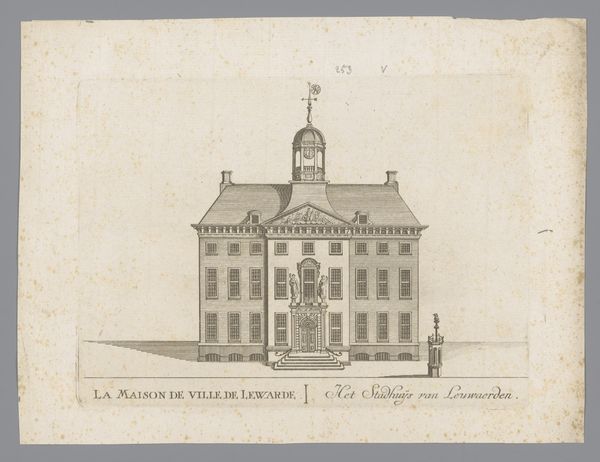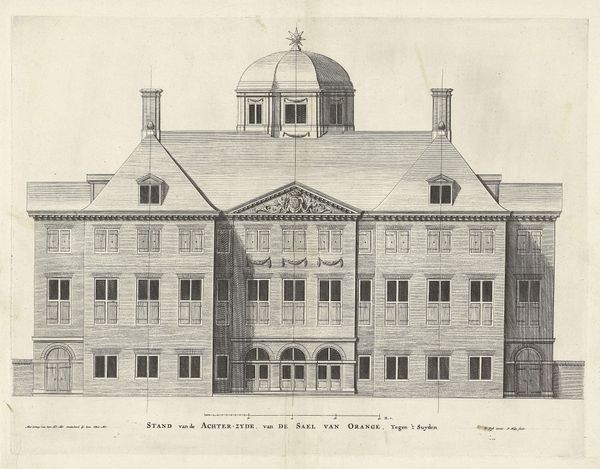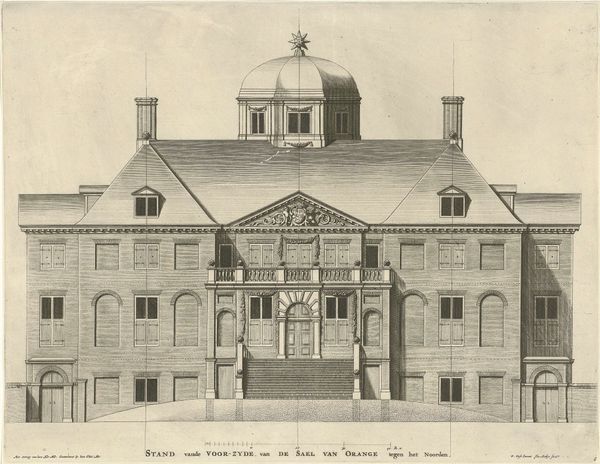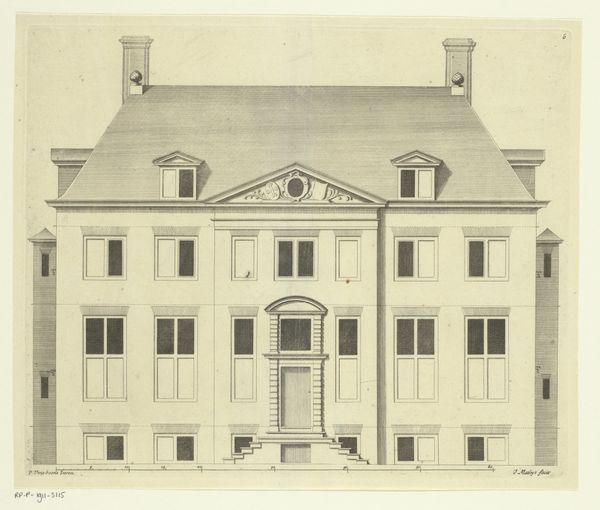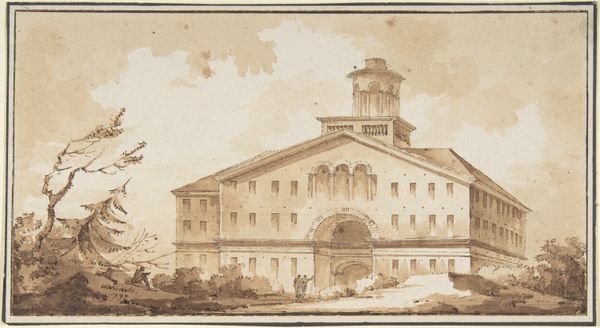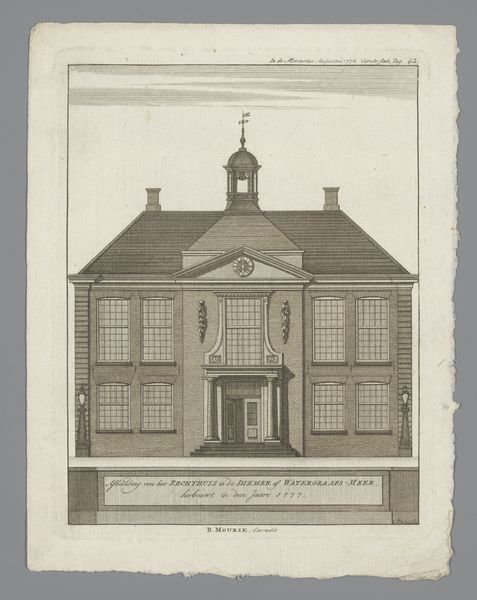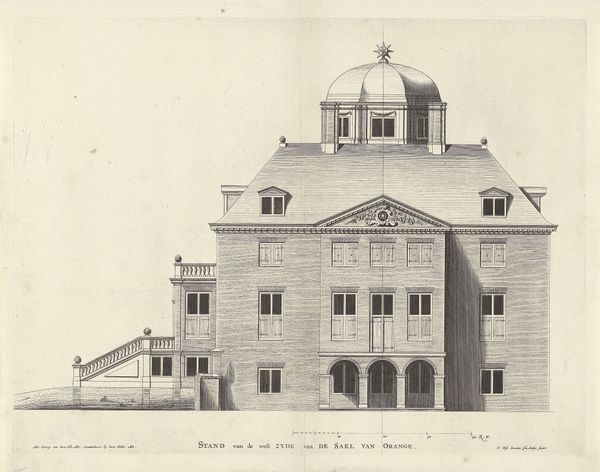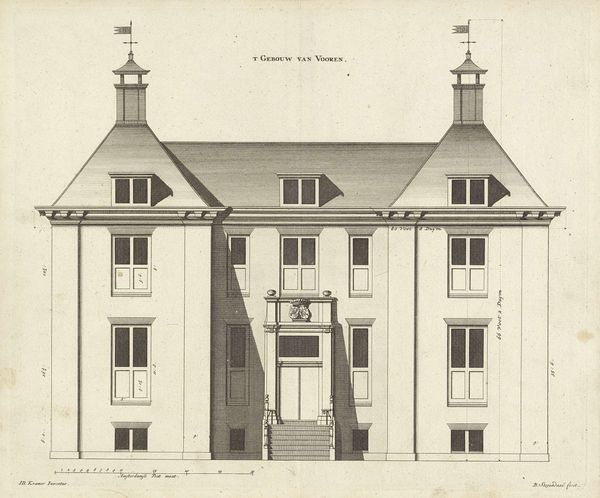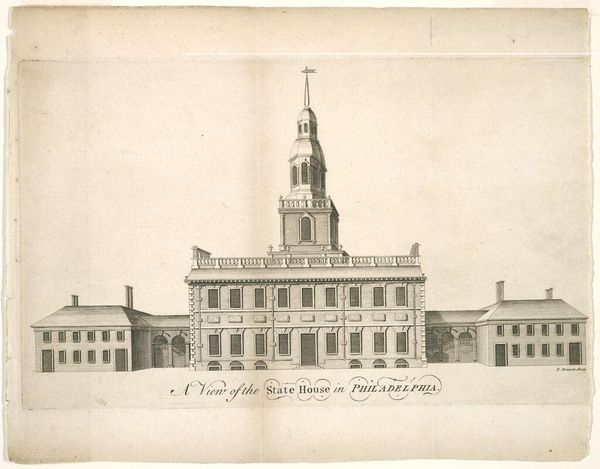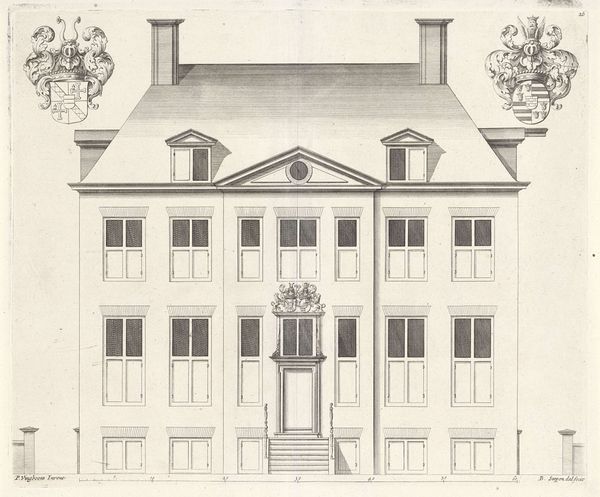
print, engraving, architecture
#
dutch-golden-age
# print
#
cityscape
#
engraving
#
architecture
#
realism
Dimensions: height 365 mm, width 437 mm
Copyright: Rijks Museum: Open Domain
Editor: Here we have Jan Matthysz.'s 1654 engraving, "Achterzijde van Swanenburg, gemeenlandshuis van Rijnland"—or, "Rear View of Swanenburg, Community Land House of Rijnland." The architectural rendering feels quite formal and austere. I am struck by how the building commands this sort of stately presence even as just an engraving. What story do you think it tells? Curator: It's important to recognize that 17th-century Dutch art, including architectural prints, often played a civic role. It depicted not just buildings, but the very symbols of power and governance. This meticulous rendering of Swanenburg, with its precise lines, was commissioned for a purpose beyond mere aesthetics. Ask yourself: who would be the audience for such a print? Editor: Perhaps local officials? I imagine having an accurate depiction of the Gemeenlandshuis— the Rijnland community land house—was important for administrative or public identity purposes. Curator: Precisely! Consider Rijnland’s function: it regulated waterways, critical for trade and agriculture. The print visually reinforced their authority. Its stark realism isn’t just descriptive; it’s a statement. Think of the social context: the Dutch Golden Age, burgeoning trade, and a rising merchant class. How do you see the style reflecting these realities? Editor: The realism presents a sense of precision and order – a very "matter of fact" look, fitting for those concerned with managing the land. Also, I notice the civic identity theme tying in with the development of an established social order in that period. Curator: Exactly. The building itself projects this image, but so does its reproduction, available on paper, meant for dissemination and documentation. These visual details of the print served a political purpose within the 17th Century public life. I'd say it prompts us to reflect on how visual media operates to shape civic life even today. Editor: This has completely changed the way I perceive the role of architectural renderings, or any sort of “realistic” depiction for that matter. Thanks for bringing these contextual issues into play.
Comments
No comments
Be the first to comment and join the conversation on the ultimate creative platform.

